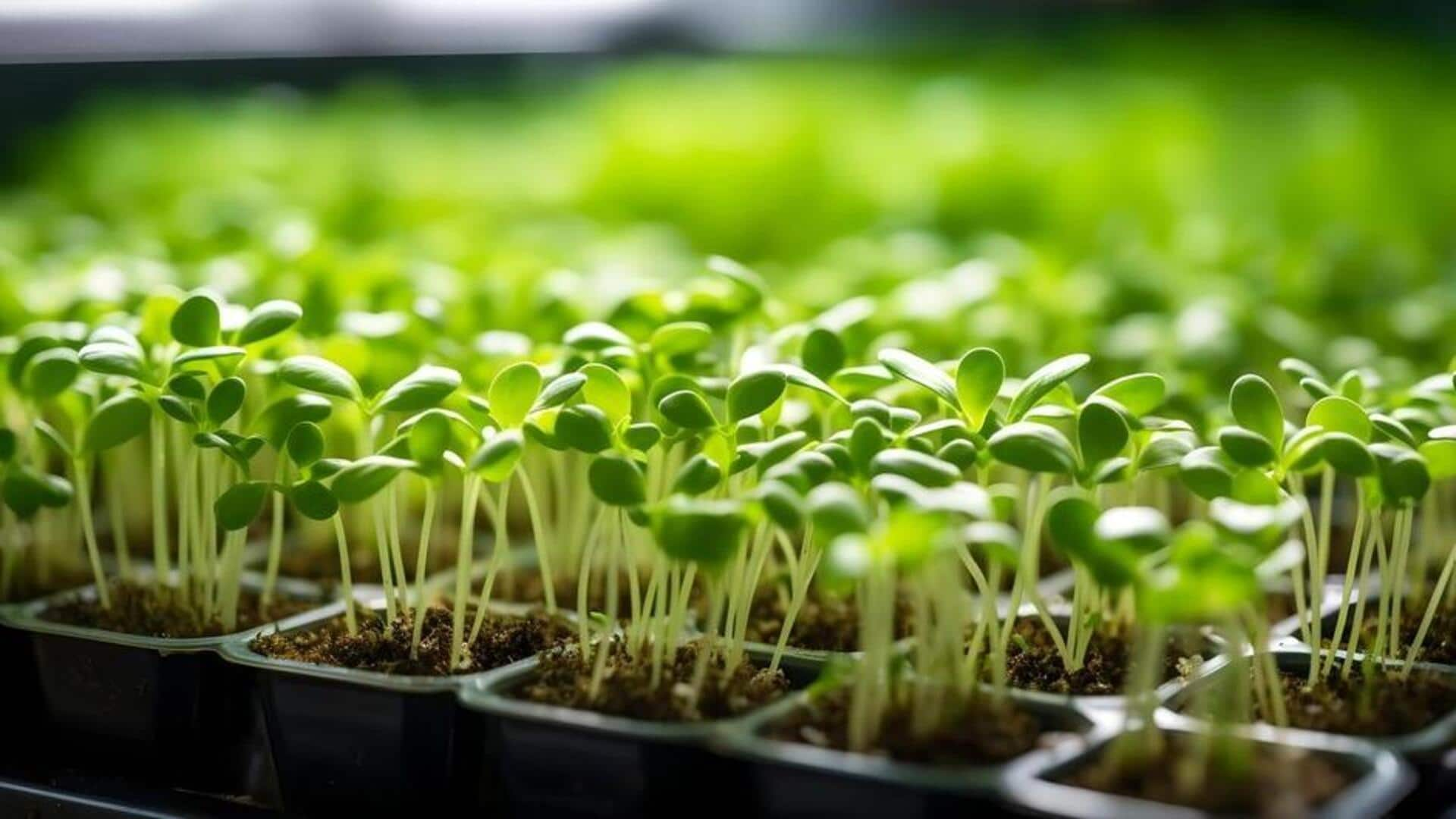
Low-cost DIY microgreens farming in Africa
What's the story
Microgreens, with their high nutritional content, have gained popularity globally, and Africa is no exception. They require minimal space to cultivate, making them ideal for urban farmers or anyone with a small gardening area. This article explores budget-friendly strategies for setting up a microgreens farm in Africa, using inexpensive materials and simple techniques that everyone can implement.
Seed selection
Selecting affordable seeds
The first step in microgreens farming is selecting the right seeds. Radishes, peas, and sunflowers are cheap choices, readily available in local markets. Buying seeds in bulk can be more economical. For example, purchasing a single packet might have a higher price compared to the reduced rate per packet when bought in bulk.
Container gardening
Utilizing recycled containers
Don't rush to buy new pots or trays, you can find plenty of suitable containers around your house. Old yogurt cups, egg cartons, and plastic takeout containers can all be reused as planting trays. Just make sure to poke a few holes at the bottom for proper drainage. You will save some money and also help the environment by reducing waste.
Soil preparation
Creating your own soil mix
High-quality soil is essential for robust microgreens growth but needn't be pricey. You can create your own blend by mixing one part compost with one part peat moss or coconut coir, and one part vermiculite or perlite. Compost can be easily produced from kitchen scraps and yard waste, further minimizing expenses.
Lighting & airflow
Natural lighting and ventilation
Microgreens need plenty of light and fresh air to grow healthy, but you don't need to invest in fancy grow lights or fans. Place your trays near a well-lit window where they can receive a minimum of four hours of direct sunlight each day. To provide good airflow, leave windows ajar during the day (if feasible), or use a small household fan at the lowest setting.
Harvest time
Harvesting techniques
Harvesting your microgreens at the optimal time is key to getting the most out of your yield without wasting resources or extra cost on inputs such as water or nutrients beyond what is needed. Most microgreens are ready for harvest two to three weeks post planting, once they've grown their first true leaves beyond the cotyledon stage— with a pair of sharp scissors, cut above the soil line with care.